Here are some quick tips from the cooks in Södertälje municipal school restaurants: Serve the salad buffet as "clean" as […]
At the top of the pyramid are products which should be consumed seldom, as they have a high environmental impact. Different conditions for food production will differentiate the pyramid according to local circumstances and seasonal variations. In the middle we put meat and other animal products from our area that can be included in the meal 1–2 times per week. At the base of the new food pyramid are foods that we can eat every day, such as local legumes, root vegetables and cereals.
Below are examples of seasonal adaptation made by Södertälje municipality, located in the Stockholm region in Sweden. Creating your own food pyramids based on your local conditions can be an interesting learning experience!
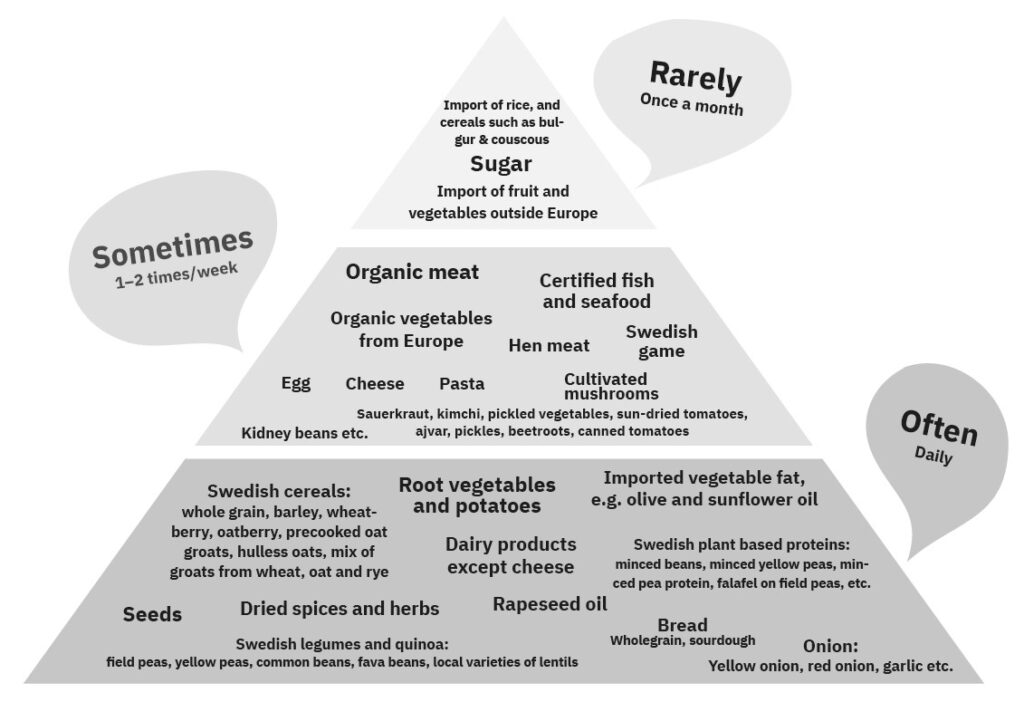
December-March. We start to empty our stocks. The base consists of root vegetables, cabbage and onions as well as cereals and legumes. To get something fresh you can choose sprouts, complemented with pickled and canned products.
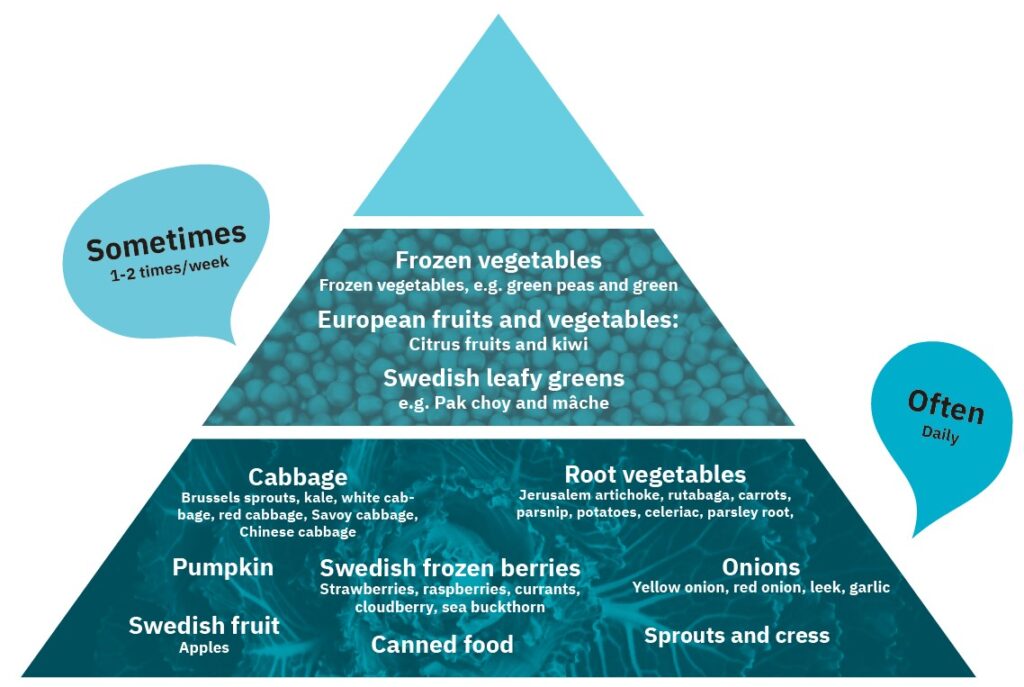
April-June. A difficult period since there is little left from last year’s harvest. Root vegetables, onions and garlic become gloomy and dull. Cheer
it up with green leaves like spinach, lettuce and spices. Dry products like beans, peas and cereals are an important base. Complement with pickles. Eventually the new potatoes.
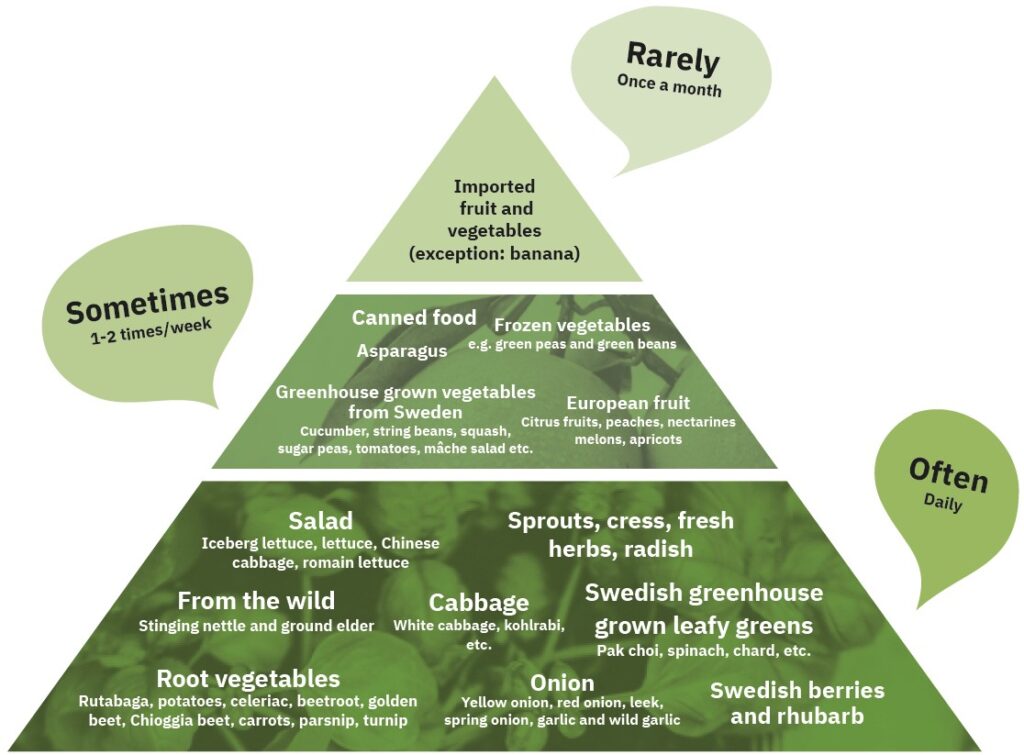
June-August. A time of abundance – tomatoes, cucumber, squash, fresh peas and beans, broccoli, cauliflower, root vegetables and a variety of greens. Berries and mushrooms can be gathered in the forests. We can revel in fresh fruit and start to pickle and preserve the abundance from the forests and fields.
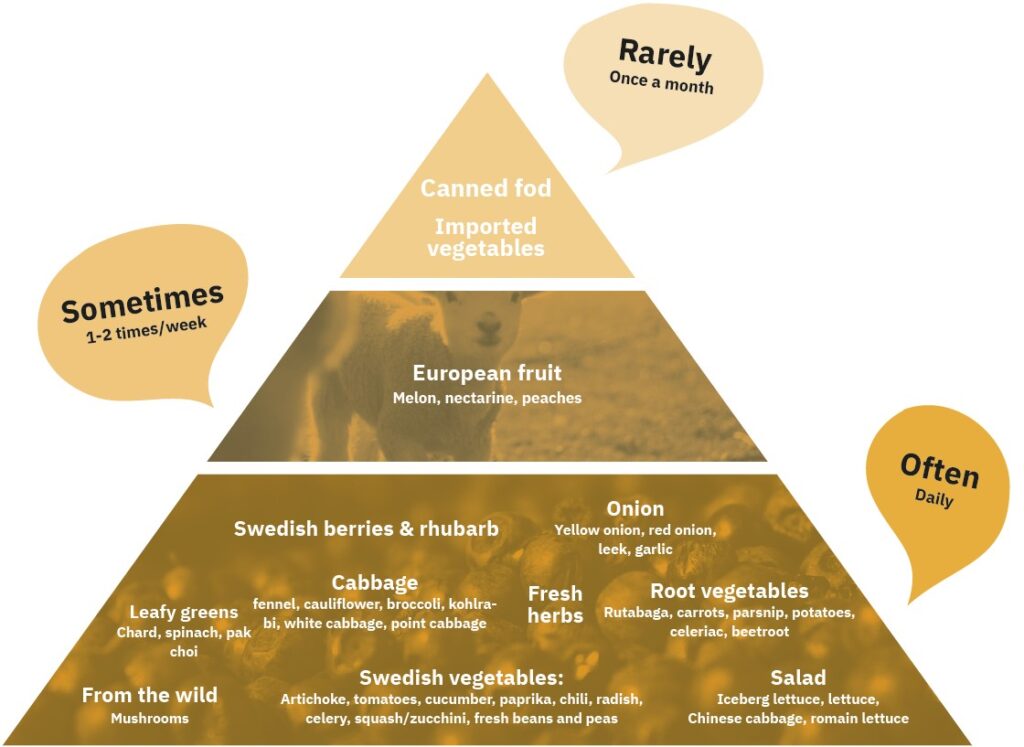
September-December. No more fresh greens, but a richness of root vegetables, different cabbages, leek and pumpkins. This is also the time for hunting and slaughtering. Wild meat and lamb are plentiful and winter mushrooms can still be found in the forest. Rich stews with meat and vegetables are the delight of the season.
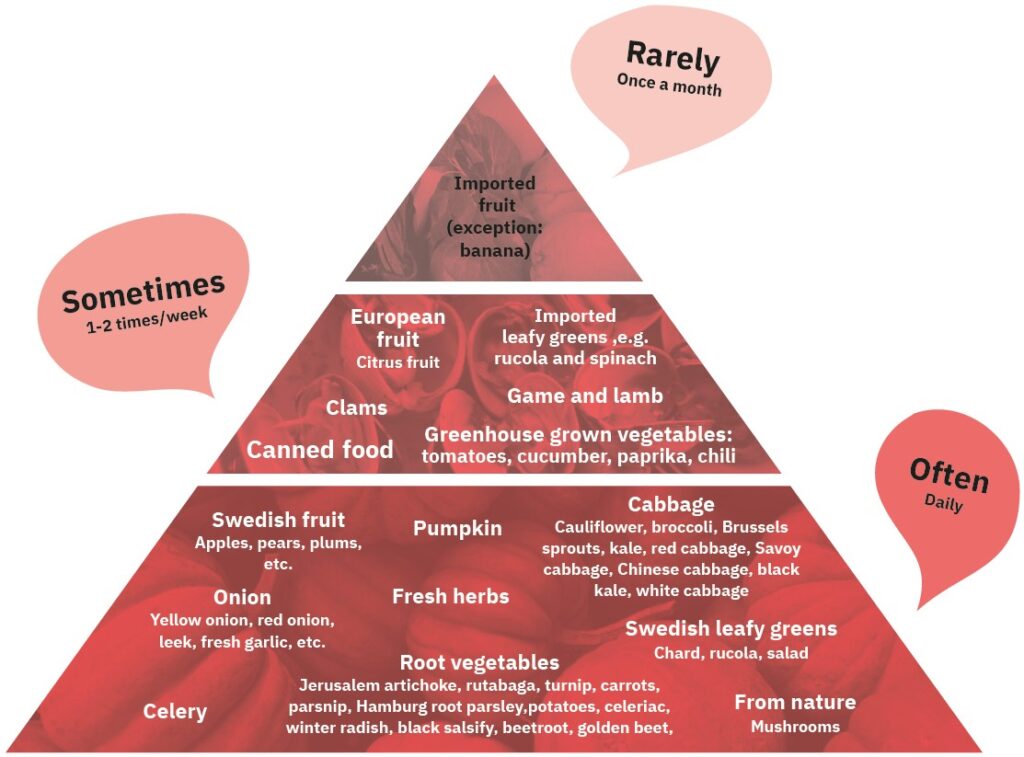
Here are some quick tips from the cooks in Södertälje municipal school restaurants: Serve the salad buffet as "clean" as […]
On this page you can download material if you want to learn more about Diet for a Green Planet or […]
Here is inspiration for those who want to find local alternatives to imported products: Imported product: Ris Swedish grown alternative: […]